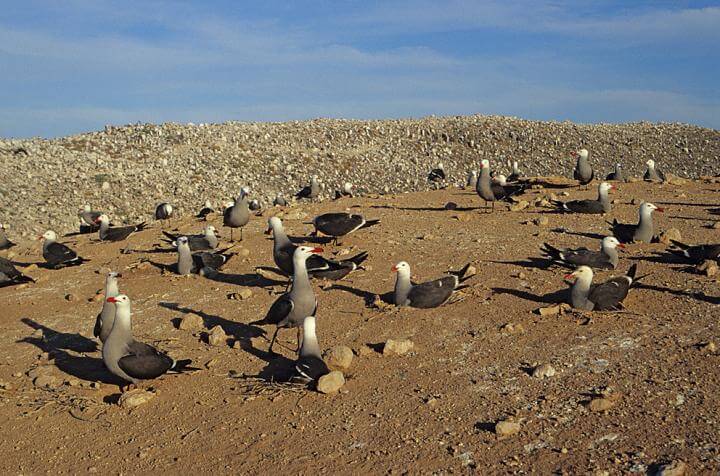To understand the present and future, we have to start with the past. A new study in The Auk: Ornithological Advances uses the mitochondrial DNA of Heermann’s Gulls to draw conclusions about how their population has expanded in the Gulf of California since the time of the glaciers–and, by extension, how human-caused climate change may affect them in the future.
Enrico Ruiz of the University of California, Merced, and his colleagues sequenced the mitochondrial DNA of 286 Heermann’s Gulls breeding in the Gulf of California in 2011 and 2012. Using a combination of statistical approaches, the researchers found that the pattern of genetic diversity among the birds suggests a period of population growth from roughly 100,000 years ago to 45,000 years ago, coinciding with the last glacial retreat in the region.
Ruiz and his colleagues believe that the gulls’ population increase was the result of large-scale climatic shifts, which would have allowed the marine species on which the gulls rely for food to expand their ranges. Though this is one of the first studies to examine how regional climate change affected vertebrates such as seabirds, past analyses have found evidence of increases in fish, mollusk, and crustacean populations during the same period.
The Heermann’s Gull population in the region has remained relatively stable since the end of this period of expansion, but Ruiz and his colleagues are concerned that this may change. “During the last 16 years, the warm oceanographic anomalies in the Gulf of California have increased in frequency from an average of one every six or seven years to six anomalies in the last 16 years,” says Ruiz. “The consensus among researchers now is that there is a general productivity decline across the trophic web, including the availability of the small pelagic fish on which the seabirds feed.” By learning how the ancient climates affected modern species’ population sizes and distribution in the past, he hopes we may better understand present changes in their distribution and abundance.


